April finally saw the weather begin to act like it should in autumn and everyone has been enjoying the cooler weather and sunshine, including the insects it seems. In fact, I saw so many insects during April, including the discovery of many new species I’ve not seen before, I thought I would concentrate on the insects I’ve spotted during April for this post.
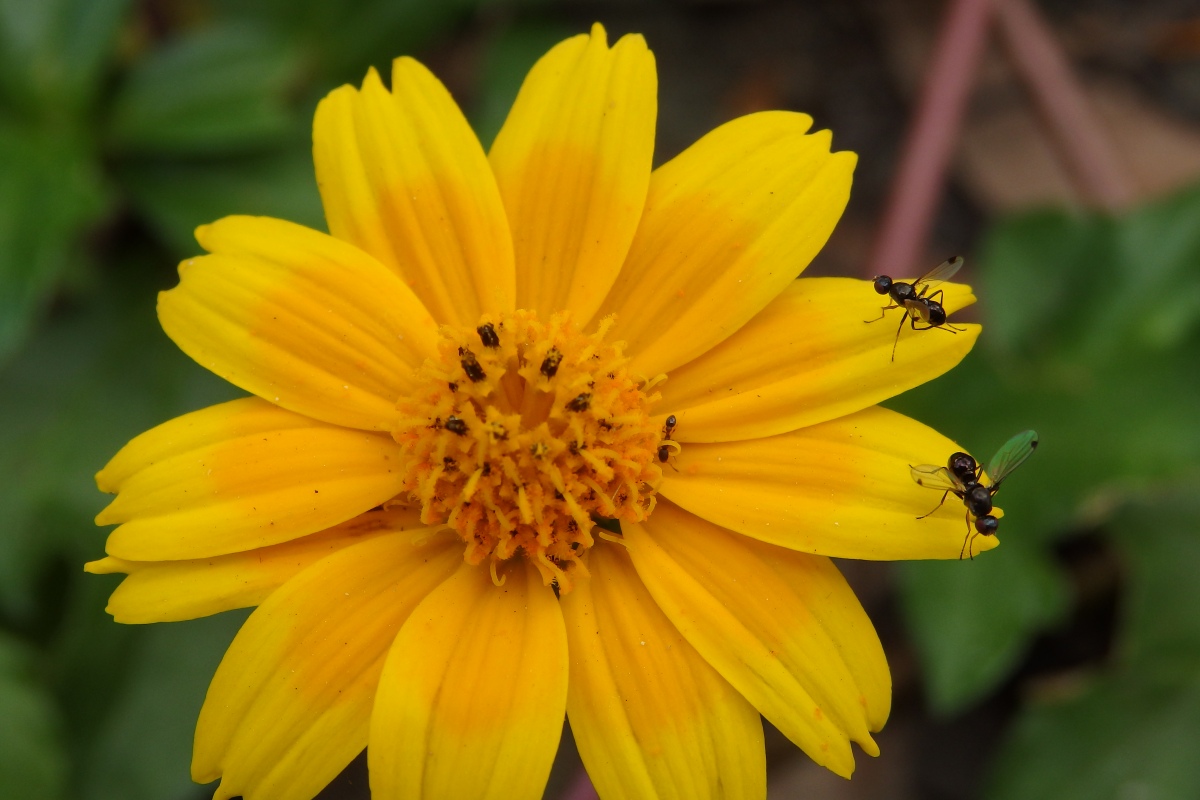
Above are ensign flies, part of the sepsidae family. You find them around decaying plant matter. They’re very small, about half a centimetre in size.
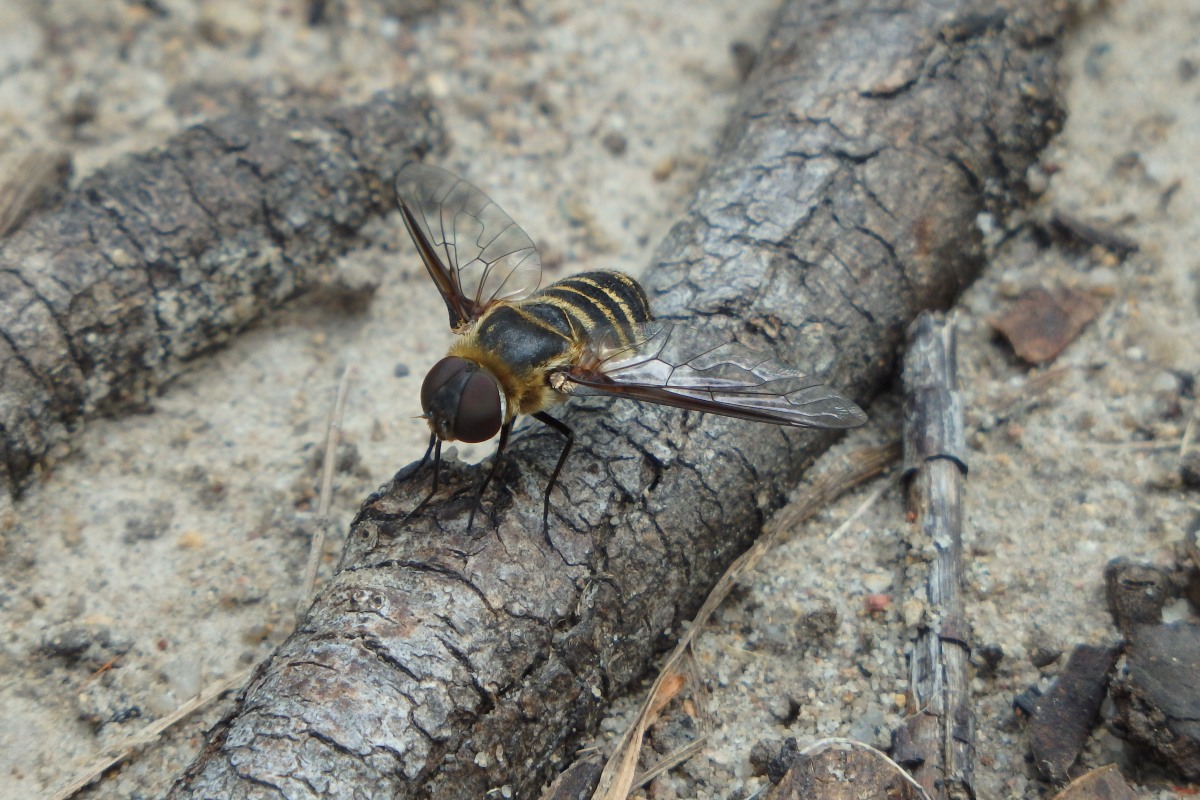
The photo above is of a villa bee fly. I came across it on the ground and at first thought it was a bee or perhaps a hoverfly, but the villa bee fly is a good mimic of both.
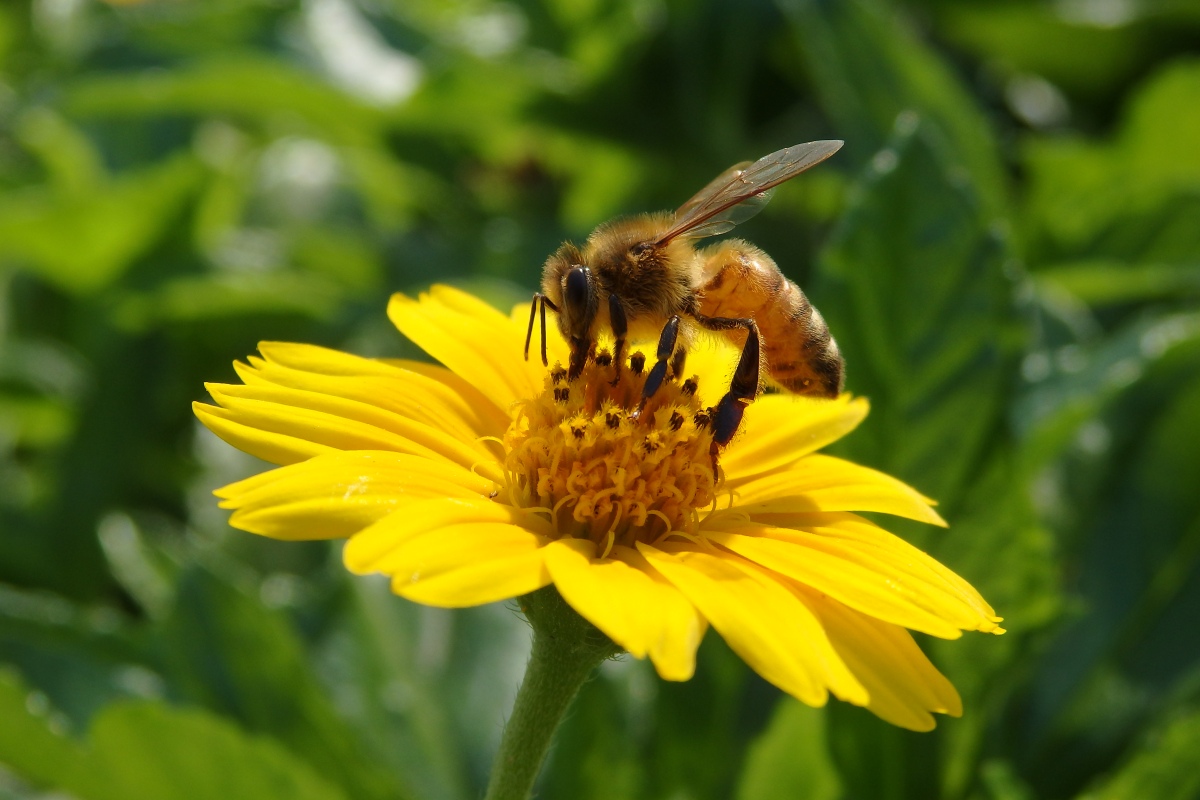
It was great to see lots of honey bees in action.
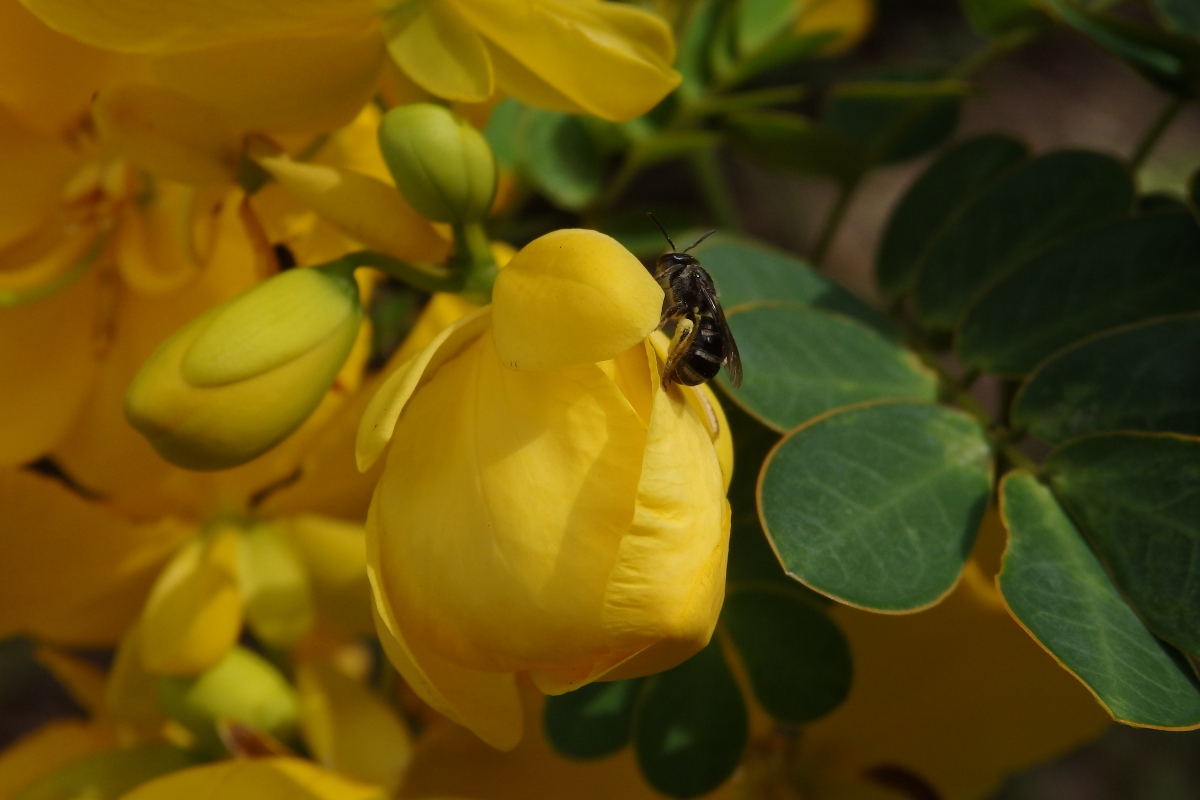
It was even better to see lots of native stingless bees (tetragonula carbonaria), or sugarbag bees. They are so tiny, only about 5mm long!

Best of all was my discovery of these incredible blue banded bees (amegilla cingulata), a native buzz pollinator. For more info and photos on this amazing bee, click here to see my earlier post.

I saw this butterfly fluttering about looking a little worse for wear. It’s a hairy lineblue butterfly, Erysichton lineata, and you can tell it’s a female by the large white patch on the wings.

In the above photo is a very small caterpillar, about 1cm in length. I came upon the above scene on a boulder and as I watched, the caterpillar would jerk about every now and again. Having no idea what it was, I submitted some pictures to Questagame for identification. They were not able to identify the species but explained that what I had seen were parasitoid wasp larval cases holding onto the caterpillar, slowly eating its innards while it was still alive. Talk about gruesome!!
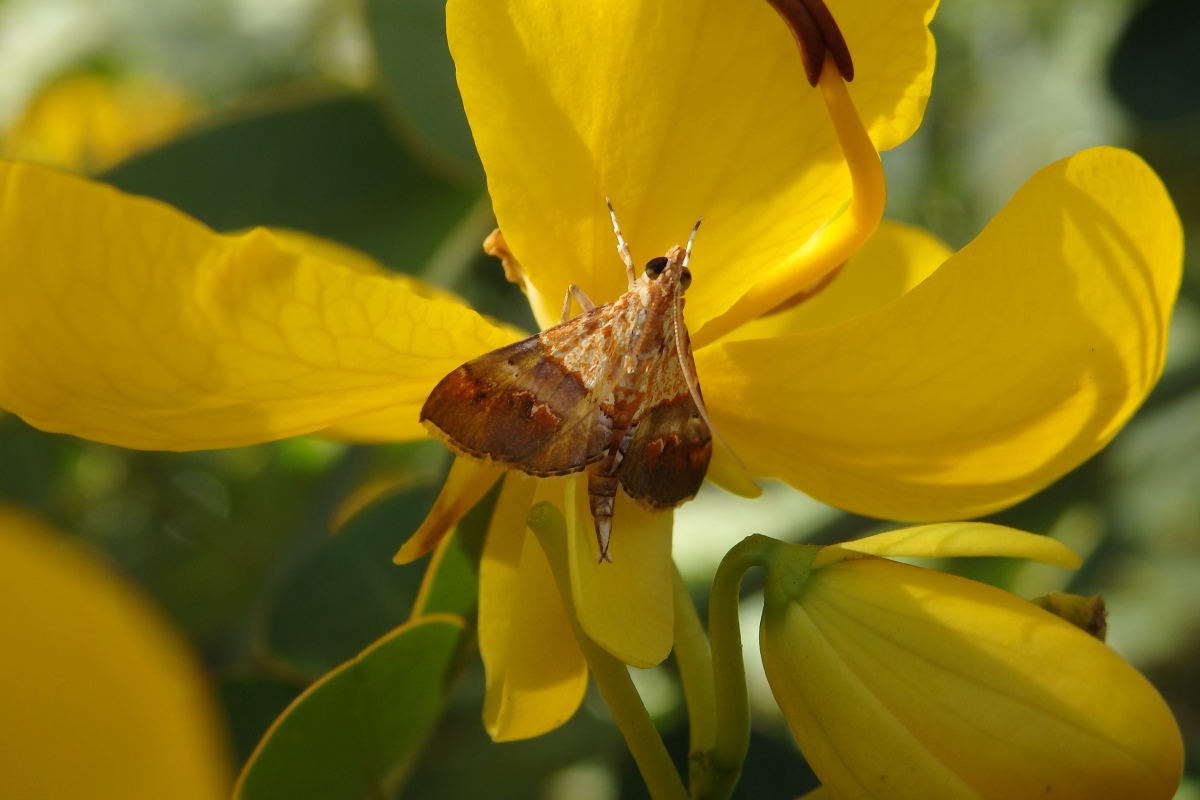
The above picture is of an agrotera amathealis. It’s a moth in the cambridae family. It’s only about a centimetre or so big with a 2cm wingspan and has lovely golden brown colours. This is a native to Australia and found in Queensland. I was advised by Questagame that there are only several recorded sightings of this moth in the Atlas of Living Australia, and few photos of a live specimen, so I feel really special being able to spot and photograph a live one (even if it was by accident)! Click here to see my photos of this moth that are now on the ALA website. 🙂
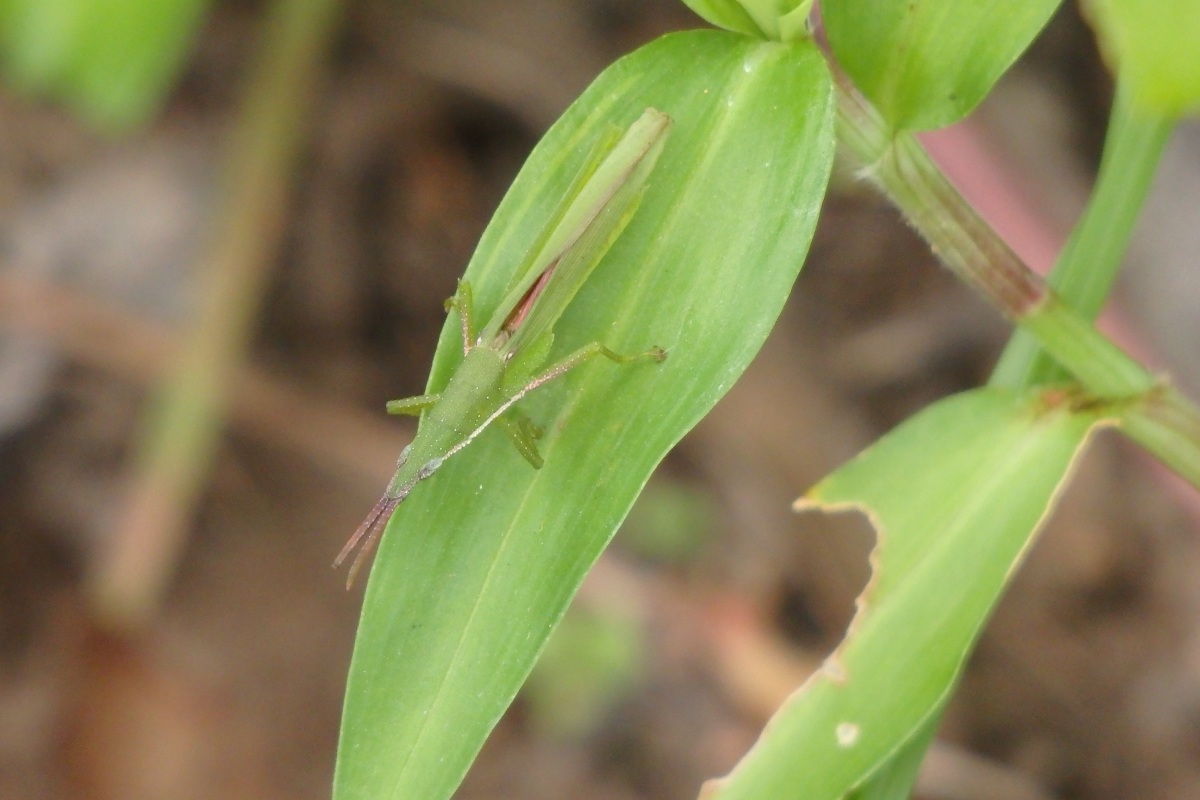
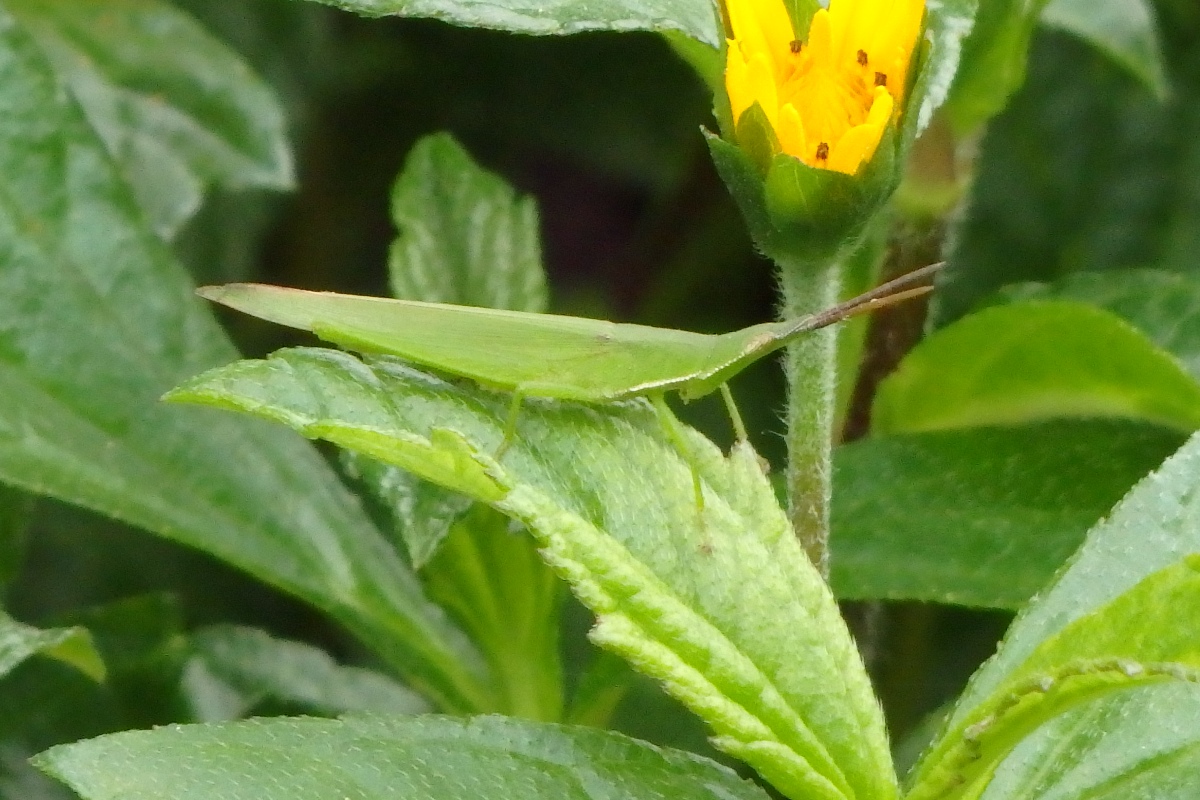
I found two of these interesting looking giant slantfaced grasshoppers. These were only about 4cm long and are considered nymphs as they can grow up to 7cm. As you can see, they have excellent camouflage!

 This time of year also means the appearance of these big hairy caterpillars, commonly called itchy grubs but also known as processionary caterpillars (Ochrogaster lunifer). This is only the second time I have seen them. I found several of them at the base of a wattle tree which was covered in their silk. They’re big caterpillars, about 8cm long. These caterpillars turn into bag shelter moths.
This time of year also means the appearance of these big hairy caterpillars, commonly called itchy grubs but also known as processionary caterpillars (Ochrogaster lunifer). This is only the second time I have seen them. I found several of them at the base of a wattle tree which was covered in their silk. They’re big caterpillars, about 8cm long. These caterpillars turn into bag shelter moths.

Above is a lydia lichen moth or asura lydia moth, commonly known as a tiger moth because of its black and orange colours. This one is a male as you can tell by the feathery antennae.

The above photo is of a seed beetle, previously known as a bean weevil and is a member of the bruchinae family. It’s very small, only a few millimetres in size.

Above is a very tiny spider, only a few millimetres big. I don’t even know how I managed to see it! If you look closely, you’ll see its web. This one is unidentified.

At first glance, you might think the above photo is of a big ant, however, it’s actually an ant mimicking seed bug, Daerlac species.

The above photo is of a type of fly known as homoneura. It has no common name and is about 5mm in length. It looks surprisingly pretty with its golden colouring and spotted wings.

Above is a sugarcane froghopper, Euryaulax carnifex, and is native to northern Australia. It’s quite small, barely a centimetre in size.

Above is an interesting looking Pyralid moth, Etiella species, also known as a snout moth or grass moth. It’s about 1.5cm in length and was very difficult to follow and photograph because of its excellent camouflage among the grass.

And finally, there were these paper wasps or polistes humilis. These wasps are native to Australia and have a yellow head and black bands across the abdomen and are 2cm in length. These can attack and sting if disturbed. The ones in the photo above had made a nest underneath the air conditioner unit in the bedroom window. A few days later I saw another wasp nest out in the yard!
Most of the insects mentioned in this post were unknown to me, and I could only identify them with the assistance of Questagame. If you’re interested in Citizen Science, check out my review of Questagame as it might be something you’re interested in.
I hope you found this post of various Australian insects interesting and didn’t mind not seeing photos of other wildlife this time around.
This is my participation in a monthly event called Wildlife Wednesdays hosted by Tina of My Gardner Says… You can see the wildlife visitors of other participants here.
Superb macros, Sue, I was ‘wowing’ at each photo. It is so interesting to see insects up so close! Thanks for your hard work and sharing, insects usually don’t stay still long enough to let me focus!
LikeLiked by 1 person
Thanks Donna. Insects often get overlooked because they’re either too small to notice easily or they look scary! I think the weather conditions were just right in April to be able to see so many.
LikeLiked by 1 person
Beautiful macros Sue, you really are quite an entomologist with all those interesting insects we never stop to see. It is amazing what fly’s around us and we are oblivious to, as they are so small and we too busy.
LikeLiked by 1 person
Thanks Ashley, it was a month of wildlife curiosities, that’s for sure. 🙂
LikeLiked by 1 person
What a feast of colour and an array of insects. Like Tina, I am impressed with your sharp macro photos. You are probably going to say they were shot on your phone!
LikeLiked by 1 person
Ha ha! No, all photos taken with a digital camera. 🙂
LikeLike
Your macro shots are spectacular–one after another, I really enjoyed reading about and viewing your insects. It is really special that you were able to observe and photograph the Agrotera amathealis, even more so, to have added to the scientific knowledge about that insect. This post was terrific! Thanks for joining in.
LikeLiked by 1 person
Thanks Tina. I just realised that I’ve been participating in your wildlife feature for 12 months now. Thanks for having Wildlife Wednesday and giving people the opportunity to share their wildlife visitors. I’ve really enjoyed seeing other participants’ posts from around the world and have made some new blogging friends too. 🙂
LikeLike